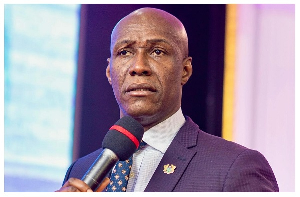Business failure is the closure or cessation of business activity following its inability to make profit or generating enough revenue to cover its expenses.
It was reported Modern Ghana Online News on 7th June 2017 that 75% of businesses in Ghana fail within the first three years. This was according to the Minister for Business Development Ibrahim Awal Mohammed.
He note that those businesses that are able to exceed three years do not go beyond 10 years of operation, adding that ‘’Small businesses constitute over 90 of all businesses in the country and the rate of failure is not acceptable.”
Risk is the possibility of a negative deviation between that which is planned and the actual outcome or living with the possibility that a future event may cause harm.
Risks to businesses come in many different guises and may include among others financial risk, Operational risk, legal risk, reputation risk, product risk, political risk and natural disaster. The success of any business depends on its ability to identify and properly manage these risks.
Risk management is the methodical and systematic process of identification and evaluation of pure loss exposures faced by the individual or an organization as well as the selection and application of the most appropriate tools for handling such risk exposures.
Most Ghanaian Businesses have however become reactive to risk exposures and have nobody responsible for Risk Management. Unlike some Banks, the non-financial corporations have not institutionalized risk management practices e.g. through the development of risk management departments and therefore in-house risk assessment capabilities.
The absence of proper risk management practices by these businesses leads to deviations of results from target objectives leading to damages and losses.
It is important to note that failure of businesses have negative impact on the economy as it increases the rate of unemployment.
Ghanaian businesses need to institutionalize risk management practices by way of assigning a manager responsible for risk management, who will identify and evaluate risk exposures and find appropriate solutions to them.
The following addresses ways in which businesses can manage its risk
First of all managers of businesses must make the effort to systematically and continuously identify all property, liability, personnel and net income risk exposures of the business as soon as or before they emerge. Businesses must determine the existence of an exposure and identify the operating cause leading to loss.
The risk identification should determine every possible risk factor associated with the business’s own activities and the business’s own environment.
The risk associated with the business’s own activities may be known by examining the nature of the business, how activities are conducted, with whom i.e. suppliers, customers etc. and where business activities are conducted i.e. whether own or customers’ premises, final destination of products etc.
The risk associated with the businesses own environment may be known by examining the business’s physical environment e.g. exposure to natural catastrophes, the social environment e.g. the rate of criminal activities, the legal environment e.g. legal provisions and enforcement of laws and the political environment, determining the exposure of political liabilities.
In order for managers to effectively identify risk inherent in Ghanaian businesses as stated above, knowledge of the tools and techniques for risk identification is required. Risk identification tools and techniques include Organizational Charts, Financial Records and Accounting Records Analysis, and Flow - Chart Method.
The organizational chart helps managers of businesses to determine organizational weaknesses, which may exacerbate risk situations e.g. whether key positions are actually manned by qualified personnel.
Financial statements and accounting records analysis include balance sheet, operating statement and supporting records. This tool helps managers of businesses to identify all property, liability and personnel exposures. Where supported by financial forecasts and budgets, future exposures may also be identified.
The flow-chart method shows all the operations of the firm i.e. the flows of materials, parts, and products from suppliers, through the various production stages and on to customers. The flow chart method can provide managers of businesses with a very detailed picture about potential operational bottlenecks. Potential hazards can be determined along the flow by applying a checklist of potential property, liability and personnel losses to each property and operation in the flow chart.
Effective risk management practice does not end at identification of the business risk. When risks are identified, they must be controlled. Some Ghanaian businesses become clueless or lack techniques in controlling risks even when they are able to identify them. Some popular risk control techniques include avoidance, loss reduction, and diversification among others.
Avoidance technique in risk control is whereby the risk is avoided completely. If managers’ efforts at avoiding the loss become successful, then there is 0% probability that you will suffer a loss from that particular risk factor. This is why avoidance is generally the first of the risk control techniques that is considered by many. With avoidance technique, threats are completely eliminated.
Loss reduction is a technique that does not only accept risk, but accepts the fact that loss might occur as a result of the risk. This technique minimizes loss in the event of some type of threat.
Diversification is a risk control technique that allocates business resources to create more than one business subsidiaries with the aim of spreading the risk. Here varieties of products are offered in different businesses or subsidiary firms. In an event of significant revenue loss from one line of business, other lines of businesses may not be affected.
The last stage which ensures effective risk management practice in Ghanaian businesses is risk financing. Risk financing may be defined as setting aside some funds to cover the financial effect of unexpected losses experienced by a firm as a result of a certain risk factor. It may also be defined as contingency capital that is assigned as reserves against those risk.
Managers of Ghanaian businesses can finance risk through insurance premiums, credit or counterparty transfers, and financial (hedging) instruments, just to mention a few.
A successful and competitive business is one which has been able to effectively identify, control and finance all forms of risk associated with its activities and environment. Unfortunately, most Ghanaian companies have not been able to adopt these risk management practices and this has resulted in rampant failure of most Ghanaian businesses.
In conclusion, I recommend that the ministry of business development in Ghana should embark on series of outdoor and on-air -business education programs, with the aim of educating business leaders, entrepreneurs among others on effective risk management practices.
The ministry should as well frequently create a platform for business players to interact with each other, thereby creating an opportunity for others to learn from successful business men and women.













